|
|
 |
|
To Accompany the Series Presented by Dan Snow
|
 |
|
|
Hardback
published March 2012 by Conway 272 pages
ISBN 978-1844861507
|
|
|
|
| Filming at Brécourt |
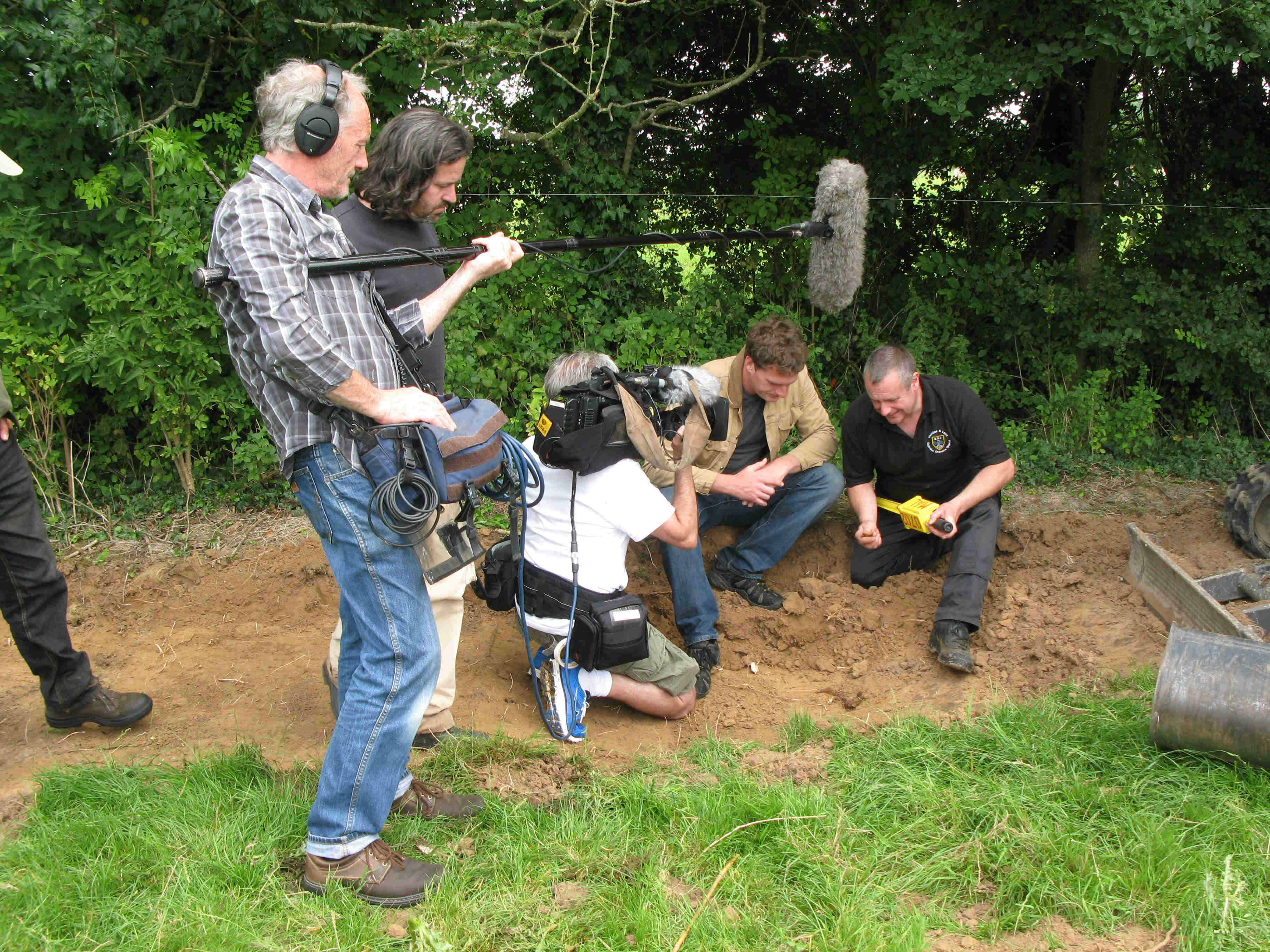
|
| Eamonn McKenna (sound) and Mark McCauley (cameraman) film Bill Shuttleworth ( bomb disposal) and Dan |
|
|
|
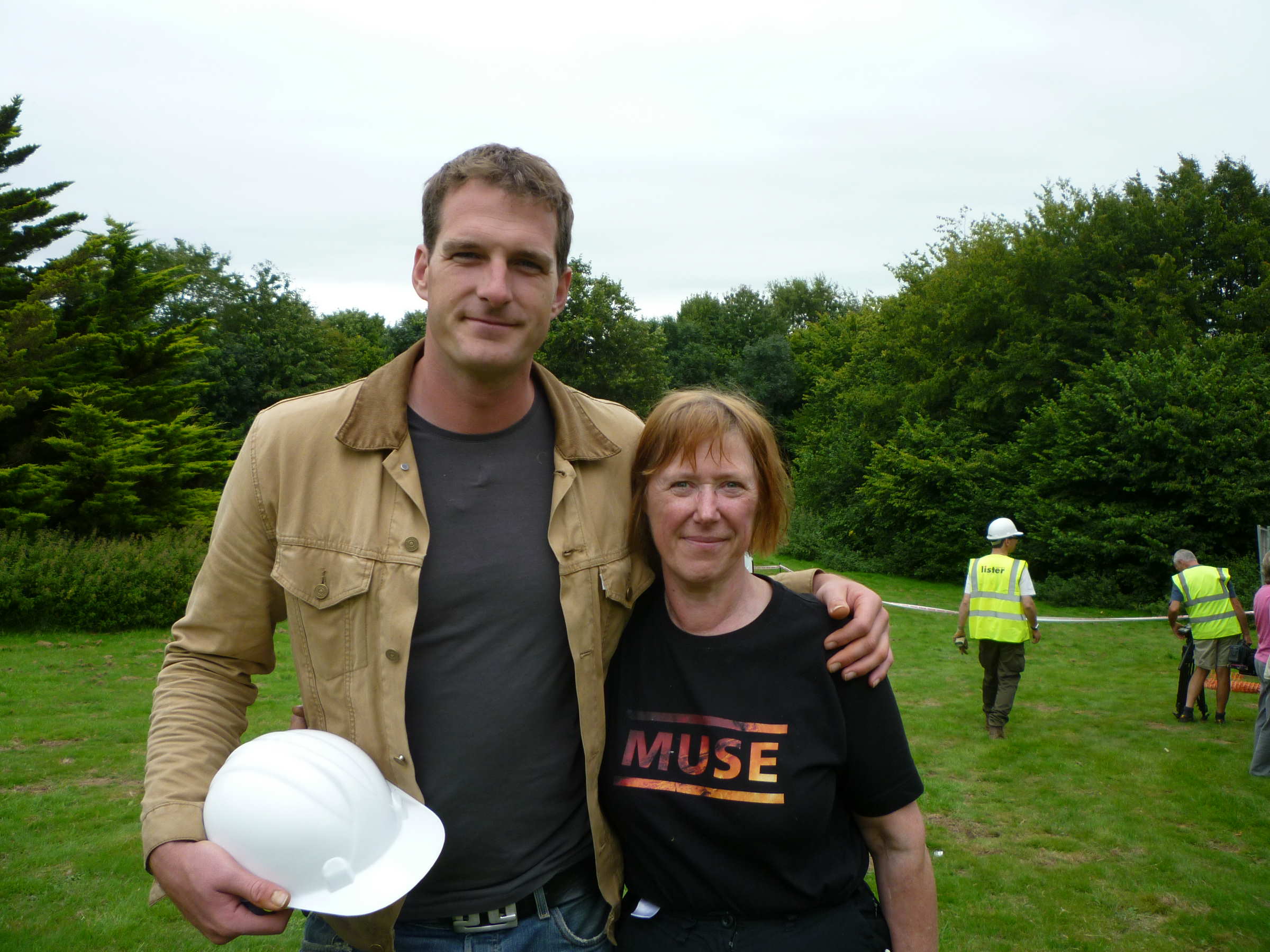
|
| How does Dan manage to look so suave at the end of a dig? I look like a wreck... |
January 2012: I had all but finished the book to accompany Dan Snow’s
TV series on the archaeology of the Second World War. The ‘on-site’ research took me
on some of the digs, including one to Somerset to watch the excavation of a
Spitfire that crashed at Crewkerne. Although the Canadian pilot baled out, I was left thinking
of all the young airmen, again on both sides, who were not so lucky and who would have been at the controls, just behind the
engine, when their crippled aircraft crashed into the ground at several hundred miles an hour. We think we know all there
is to know about the Second World War, but it takes the physical evidence, in combination with all the other sources, to round
out the story and bring an emotional understanding.
Shortly after that dig, I got to meet the son of that pilot
when he came over from New York.
The series went out
on the BBC. Actually, it was a bit of a mess because at first we were told it was going out on BBC1 or 2, then it was only
for BBC NI (okay if you have satellite TV), then a 1-hour special was screen on BBC1, and finally the whole series was
screened at short notice over three nights. A Candian production was also made.
As well as digs to recover crashed aircraft and visits to both famous and forgotten sites, it featured
dives on sunken U-boats and merchant ships. The images in the book are excellent. There are even
some of my photographs - of pillboxes... Jennifer Veall, the picture editor, has done a wonderful job, and so has the
copy editor, Chris Westhorpe. Tie-in books are necessarily written rather more quickly than most other books, so a good
copy editor like Chris is such a bonus. Editors are a pain because they nit-pick and you feel right up against the deadline,
but afterwards, when the stress is all finished and the book is in the hand, you have to admit that it is
a better book for that rigorous scrutiny.
This was my first TV-tie-in (probably the last!) ,
so as well as doing my own research and writing I had the chance to watch the team from Derry-based 360 Production
and, of course, Dan Snow, in action. You have to keep alert: stay out of the way of the cameras, and keep the voice
down. If they have to raise the sound level in the studio it can bring up sounds from a surprisingly far distance, especially
in a rural area. Dan was amazingly professional. His responses to camera were always unrehearsed, and even
at the end of a day’s filming he was full of enthusiasm. He also had the ability to spend a day digging in a hole and
yet emerge clean and tidy.
The book isn't quite the same as the TV series. I have been able to research the
stories in more depth and bring in more of the background. You don't realise, until you see the actual script, how little
words there are in a one-hour documentary. This really is a case in which the images tell the story and the voice-overs
etc expand and guide the viewer through the images. So, for example, the team carried out that dig at Crewkerne
to see what could be recovered of a Spitfire that crashed in 1942 after running out of fuel. I have been able to tell the
story of the young Canadian pilot, both before and after the crash - and a remarkable career he had! I'm very grateful
to his son for the help he gave and the images he let us use. The team also filmed at Bois Carrée, one of the
infamous lauch sites for the V-1 bombs that caused so much destruction in London, so I broadened out the story to include
the bomb-chasing exploits of 41 and 91 Squadrons RAF and the self-sacrifice of one of their pilots, a young Frenchman, a week
before he was due to marry. As a third example, I included quite a lot of material on the Defence of Britain in order to bring
the Northern Irish stories into the wider context of anti-invasion preparations. I think it is important that tie-in books
give you something extra, rather than simply being a copy of the TV series but without the moving images.
It's
a fascinating series of programmes, covering ground that will have been new to many people and in a format that
is easily accessible without being patronising. One thing had worried me: would it be yet another of those series where
so much time is spent telling the viewer what they will see, repeating words spoken to camera by those who are interviewed,
and then recapping every five minutes? I have lost count of the number of potentially interesting programmes
I gave up watching because they drove me to distraction with the constant repetition. Dig WW2 wasn't like
that.
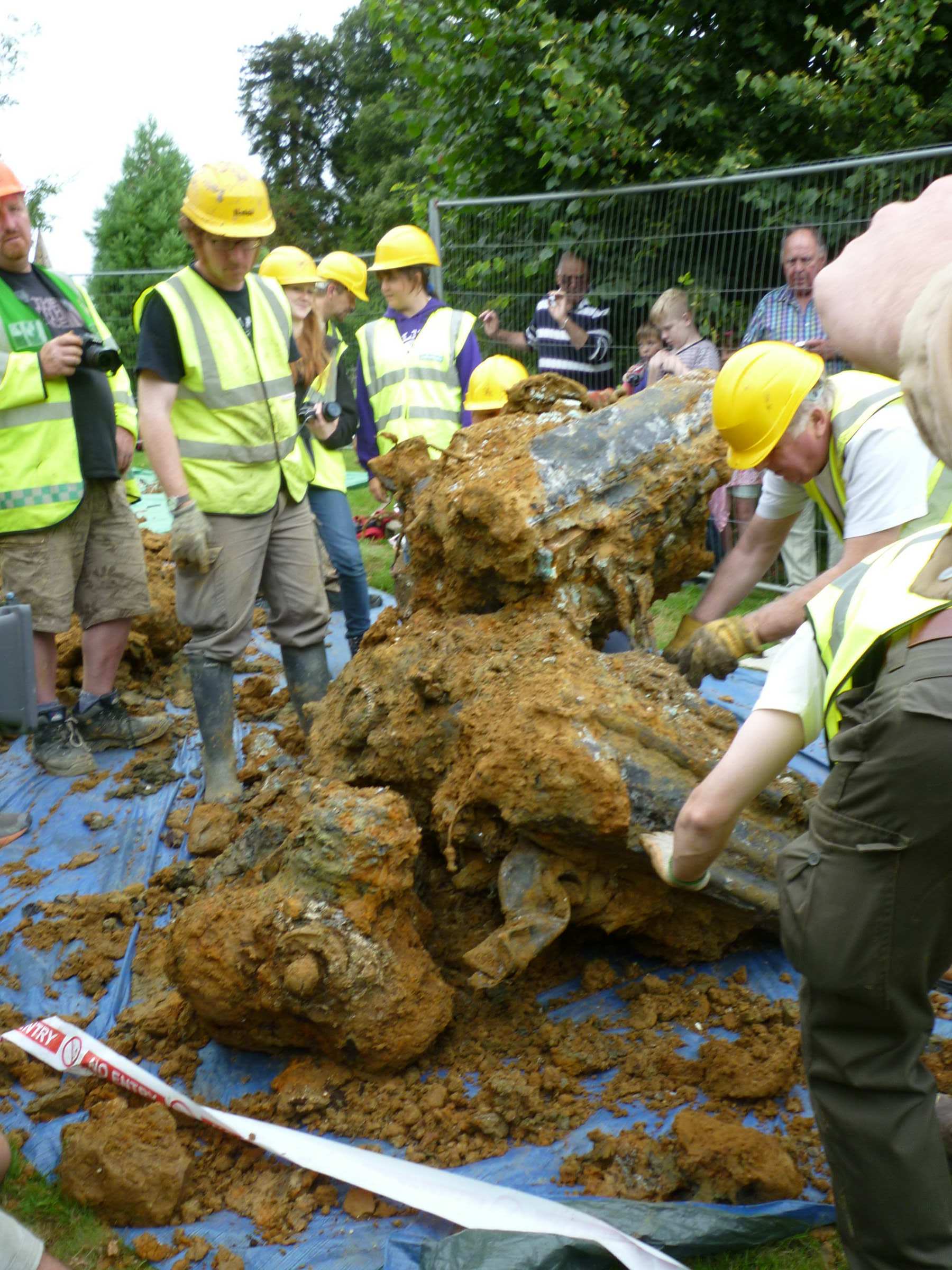
|
| Merlin 45 engine recovered at Crewkerne |
|
 |
|
|
 |
|
|
 |
|
|
|
|
During my research into the Defence of Britain I discovered the Spigot Mortar Emplacement. It
doesn't look much, but thousands of these were distributed to the Home Guard to be located in pits dug in positions covering
canal bridges, crossroads and other strategic points. Its purpose was to act as a support and pivot for the portable Blacker
Bombard, an anti-tank or anti-personnel weapon likewise issued to the Home Guard. When the weapon was fired, a spring in the
barrel pushed a spigot into the bottom of the mortar shell, causing a detonation that fired the shell. Fine in theory, except
that the Bombard was a muzzle-loader, and its anti-tank range was 100 yards or less. Home Guard officers were not impressed
with a weapon that would have to be reloaded at such close range, right under the eyes of the enemy. However, away
from the Home Front and reinvented as the the PIAT (Projector, Infantry, Anti Tank), it became the infantry's anti-tank
weapon par excellence in several theatres of combat, and was used by at least seven Victoria Cross winners. The abandoned emplacements can still be found dotted around the British countryside.
| Spigot Mortar Emplacement |

|
| This specimen, at Coalhouse Fort, was sandbagged, not set into a pit. |
| Spigot Mortar Emplacement reinforcement |
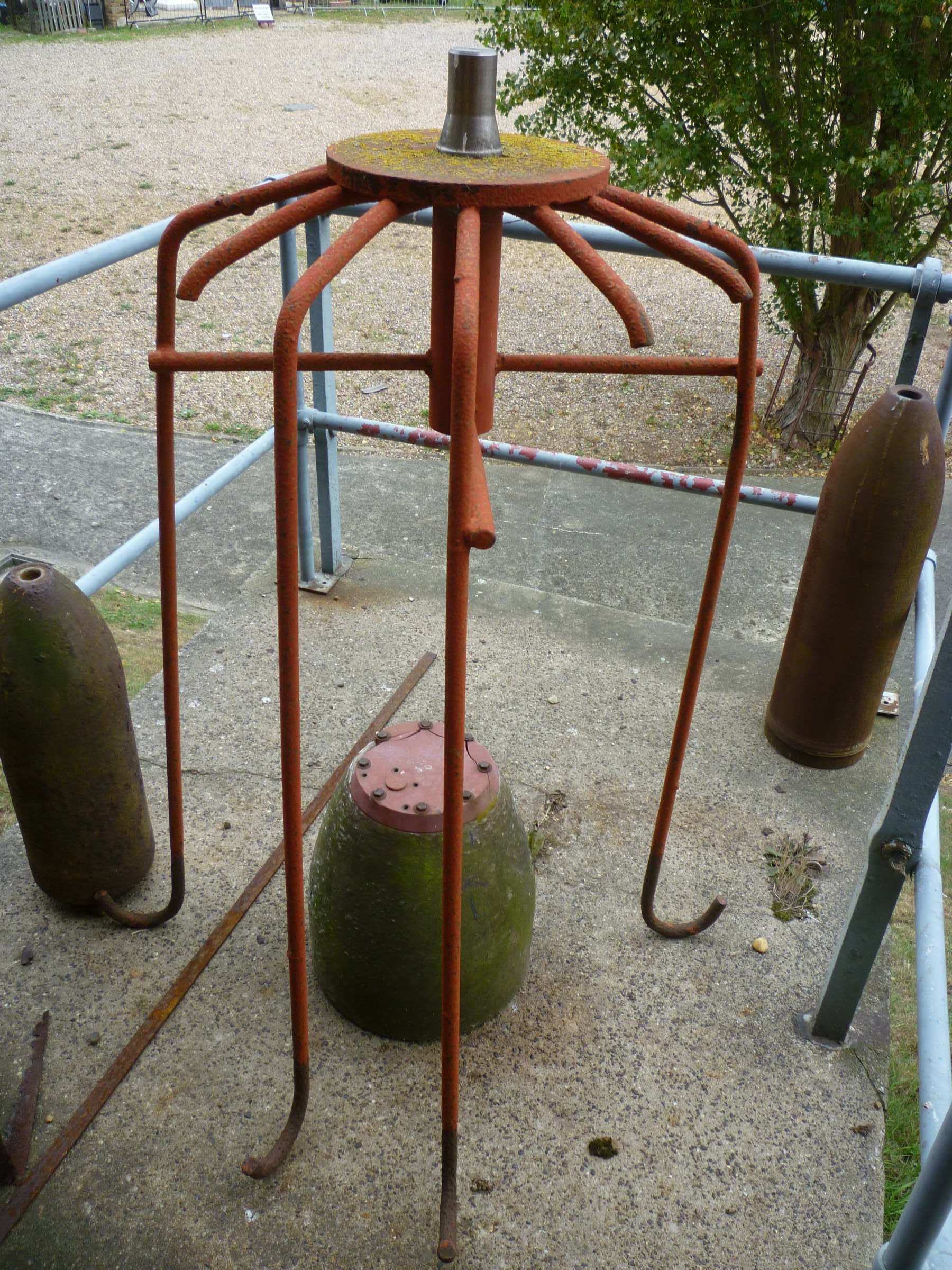
|
| The iron cage that reinforced the concrete from which the emplacement was made. |
What you can see in the picture below is a Picket Hamilton Fort, with me holding open the hatch as I prepare
to descend into it. But during the 2nd World War you wouldn't have been able to see so uch of it. in fact, you wouldn't
have known it was there. Now imagine you are a German paratrooper, dropping out of the sky, your mission to capture
a particular RAF station. You know from the pre-op briefing that the airfield has pillboxes around the perimeter
but the main part of the site will be undefended because you can't put pillboxes in the way of aircraft taxiing,
taking off and landing. So you land, deal with the pillboxes and all hell breaks loose. You're being fired
on...but how? behold the genius of the Picket Hamilton...A hollow concrete cylinder has been buried almost flush with
the ground. Inside it fits a stubby second cylinder, also hollow, with a round cap that forms a brim to stop it falling
down the outer case. It is called the Rising Head. It has two small windows that are usually hidden hidden
inside the case. Aircraft can happily land and take off and run over what, from above, is a simple concrete
disc in the ground. In the centre of the cylinder is a hydraulic, hand operated rod that can raise or lower the
Rising Head, exposing the windows. There is also narrow ledge near the botton and two men can stand upright on the ledge when
the top is raised, and they can fire out of the windows on our poor, unsuspecting German invaders. When the top is lowered,
the two guards will have to do their Quasimodo impression.
Brilliant? Well, no. Not exactly. You can't leave
what became known as the Pop-Up Pillbox manned all the time, so you need some warning in order man it when it will be needed.
It might have been okay for lightweight fighters to trundle over, but it wasn't strong enough for bombers. The firing
angle wasn't great: you could only get a few invaders in the ankle, unless you opened the entry hatch and
fired at the sky. And these things were installed in English airfield, so the good old English rain easily seeped into
the cylinders and filled them up. Churchill was rather impressed with the idea and ordered them to be installed, but, to be
fair to him, when you are losing sleep over a very probable German invasion, you will grasp at almost any new concept for
defence.
Most pop-ups have been lost - removed or beyond rescue, but Lashenden Air Warfare Museum managed to acquire
the right to remove and relocate this one, and it is well worth a viewing. As is the whole museum. They have some astonishing
exhibits and everything is displayed in context.
Vsit the website of Lashenden Air Warfare Museum
| Pickett Hamilton Fort, or Pop-Up Pillbox |
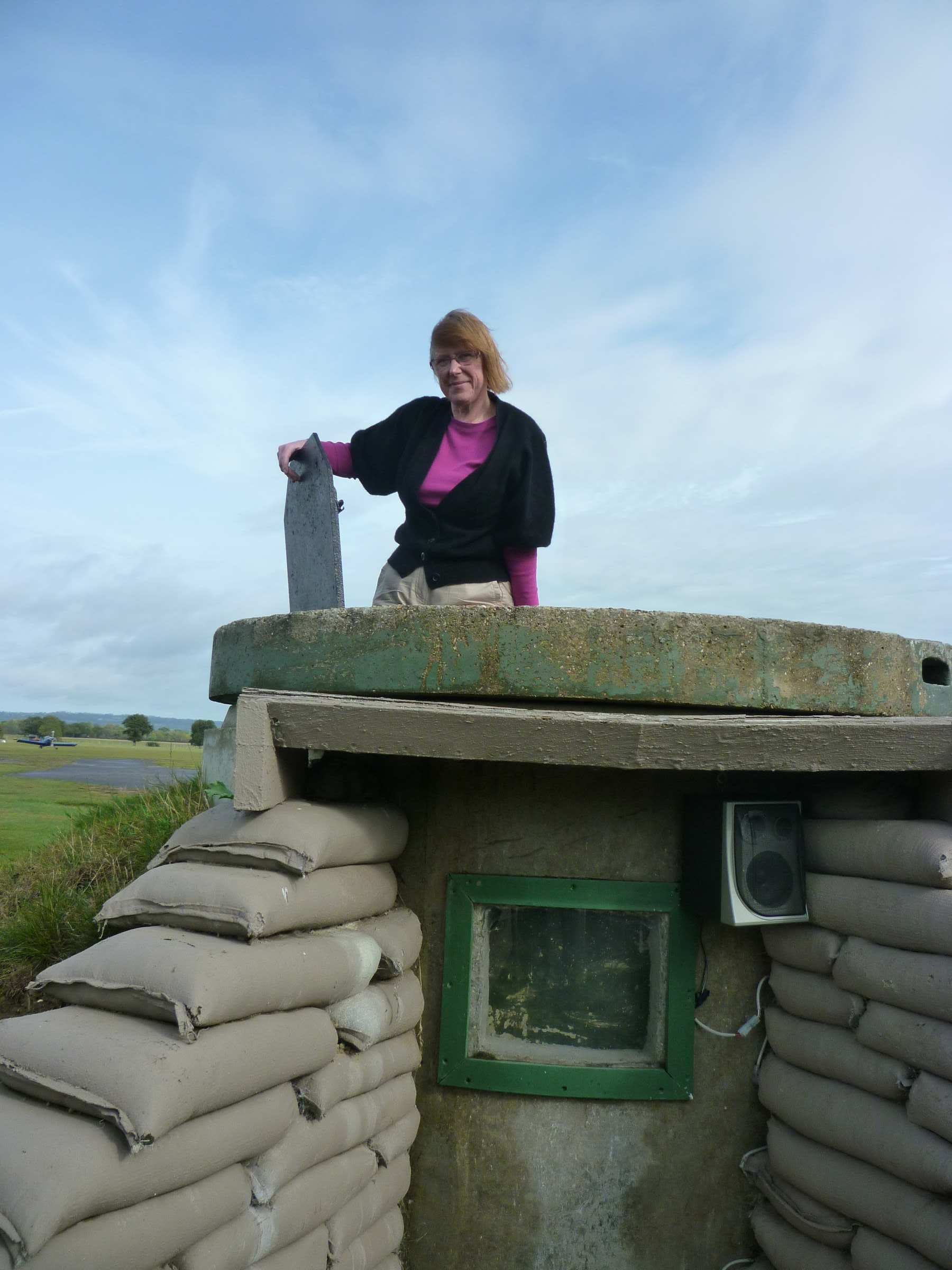
|
| There's not much room inside this unusual pillbox at Lashenden Air Warfare Museum! |
The pillbox is displayed pretty much out of the ground,
set into an earth bank and supported at the front by sandbags. The window you can see has been cut unto it so visitors can
look inside - the firing windows are, of course, hidden. But they have installed a system that means, for a small donation,
you can raise and lower the Rising Head and see the box in action - a dummy gun even comes out. Getting inside it was, I'm
afraid, a special treat for me!
google-site-verification: google13e98faae6513666.html
|
|
|
 |

